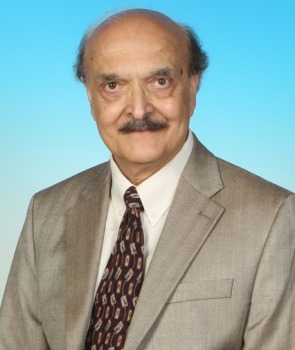Lehigh University
Office or Center Name Here
Surendra P. Shah
Walter P. Murphy Professor of Civil Engineering (Emeritus), Northwestern University, Evanston, IL
Sustainability in Concrete Construction Based on Nanotechnology
click here to view video
Friday, February 23, 2018– 4:30 pm
Location: Whitaker Lab 303, Lehigh University,5 E. Packer Avenue, Bethlehem, PA
Surendra P. Shah, Walter P. Murphy Professor (emeritus) at Northwestern University: Surendra Shah was the director of the NSF funded Science and Technology Center of Advanced Cement Based Materials. He is an honorary member of ACI and RILEM and has published over 500 journal articles on various aspects of concrete technology. Prof. Shah is a member of the U.S. National Academy of Engineering, the Chinese Academy of Engineering, and the Indian Academy of Engineering. Currently he is a distinguished professor at IIT Madras, Honorary Professor at Tongji University, Hongkong Poly and Jinan University, and a member of the Institute of Advanced Studies at HKUST.
Sustainability in Concrete Construction Based on Nanotechnology. Super tall buildings such as the one km high Kingdom Tower are constructed with concrete as a structural material. Such tall buildings are made with so-called high performance concrete, which can have strength 5 times that of conventional concrete. The development of high strength concrete is a result of our understanding of particle packing, rheology and microstructure engineering. Concrete is a critical material for infrastructure; the world wide consumption of concrete is about 2 tons for every living human being. However, its continuing use will require improving its sustainability. Nanotechnology is playing an increasing role in making concrete more sustainable. Some examples are given.
One approach to making concrete more sustainable is to replace Portland cement (and its significant carbon foot print) with fly ash, a waste material from burning coal. When fly ash is replaced with Portland cement, the rate of strength development slows down, which is not desirable. Addition of nano particle such as nano silica accelerates the chemical reaction by providing nucleation sites.
Manipulation of concrete rheology has been a key to make concrete more constructable. The viscosity should be sufficiently small so that concrete can be pumped a great distance, but the material should be thixotropic to reduce the pressure on form work. Addition of a small amount of nanoclay can substantially reduce the form work pressure. Concrete is a brittle material, prone to cracking. To reinforce concrete at nano scale addition of carbon nano tube is studied. The key challenges include dispersion and rheology.
